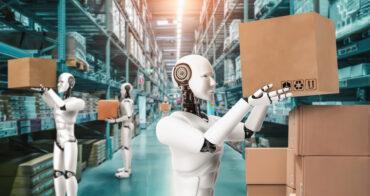
A real-time data platform lets you streamline development workflows, optimize resource utilization, and leverage your data to drive your gen AI applications.
Developers are increasingly creating new applications tailored to meet their organizations’ needs following a year marked by the explosive growth and widespread adoption of generative AI tools.
However, the success of these emerging gen AI applications hinges on access to high-quality data — which is proving a significant challenge for many organizations.
But now is the time to get it right — gen AI applications falter when data is difficult to access, lacks sufficient detail or is poor quality.
The root of these problems often lies in outdated legacy database architectures, which fail to meet the scale, speed and complexity required by modern data needs and emerging technologies like gen AI. These factors are essential for effectively training and deploying gen AI models.
Instead of relying on outdated legacy systems, developers must transition to real-time data platforms that support AI development across industries. Unlike traditional data management systems — which weren’t designed with AI in mind — real-time data platforms enable more comprehensive data collection, aggregation, analysis, and model training.
These capabilities are essential when building AI-powered applications. Even the most sophisticated algorithms can’t compensate for the absence of these foundational pieces.
Set clear objectives and guardrails before integrating gen AI
Considering the critical role data platforms will play in gen AI initiatives moving forward, IT leaders and developers must start by establishing clear, well-defined goals for data utilization. Only then can your organization harness gen AI’s full potential to solve complex problems, drive innovation, and deliver value.
Setting objectives is critical because it encourages upfront planning, which directs your overall development process and ensures stakeholders across your organization are prepared to leverage AI capabilities to meet specific needs.
It’s like baking a cake without first finding a recipe or trying to assemble a bike without the instruction manual. Sure, we’re eager to taste that first delicious slice or head out for a spin, but there’s no guarantee the cake will taste good, or the bike will function properly if we wing it.
This holds true for gen AI as well. Diving into action without establishing the necessary groundwork or structures can lead to increased risk and compromised data quality. And unlike a cake or bike, where the hazard is a too-sweet bite or a scraped knee, with gen AI the dangers are more costly — ethical oversights, compliance issues, potential security breaches and more.
For example, a retail company may set an objective of using gen AI to customize marketing strategies based on real-time customer data analysis. This is a strategic move, but not without proper planning. The guardrails for this initiative should include mechanisms that ensure all data handling complies with consumer data protection laws such as the GDPR, implementing rigorous data security protocols, and establishing oversight mechanisms to prevent AI bias in targeting and personalization. The data also needs to be up-to-date, clean, and reliable.
By setting clear objectives and guardrails for your gen AI applications, you can maximize the advantages of the technology, enhancing efficiency and innovation while minimizing any associated risks or challenges.
See also: What Exactly is a Unified Real-time Platform
3 key considerations for your real-time data platform
Once you’ve established proper guidelines, it’s time to identify a real-time data platform to power your gen AI applications. To ensure the success of your gen AI initiatives, keep the following considerations in mind when evaluating platform options:
1) Data quality assurance
It’s widely recognized that AI systems are only as effective as the data they utilize — yet this understanding hasn’t always translated into action.
A real-time data platform can improve the performance of your gen AI systems by quickly processing and analyzing live data, accommodating both structured and unstructured formats such as vectors, JSON, time-series, text, SQL and geospatial data. This capability ensures your Large Language Models (LLMs) function optimally, leveraging fresh, accurate data to deliver reliable insights and decision-making based on the most up-to-date information.
This level of quality assurance is crucial in gen AI-powered applications. Consider the natural language understanding used by virtual assistants, where the speed of data processing directly impacts the effectiveness of the assistant. When a virtual assistant can quickly understand and process user queries leveraging high-quality, real-time data, it enhances your user experience and provides more accurate and context-aware responses. But a virtual assistant that is hampered by data access issues may be too slow to respond or even offer inaccurate suggestions.
The need for data speed and accuracy applies broadly across all industries. For example, a real-time data platform can help retailers personalize recommendations based on customer behavior or financial institutions achieve real-time fraud detection.
2) Ease of integration
To optimize the performance of your gen AI applications, look for a data platform that offers robust integration capabilities and supports a wide range of data sources and connectors.
Your data platform must be highly scalable and capable of integrating seamlessly with various systems, technologies, and frameworks. This compatibility is foundational because it enables a continuous data flow across platforms and real-time analytics capabilities.
For example, in manufacturing, data platforms enable predictive maintenance by analyzing sensor data to predict equipment failures. This integration optimizes operations and reduces downtime.
Additionally, a real-time data platform’s ability to function as an effective ingest point for all data supports the creation and training of sophisticated models, such as custom-trained GPT models. By facilitating the easy extraction and transformation of data from all of your sources, the data platform can leverage a higher volume of data to generate prompts that improve the training efficiency and effectiveness of your models.
With advanced features like vector databases and semantic search functionalities, you can effortlessly experiment with and refine different prompts, optimizing your AI model training process.
3) Security and compliance measures
To protect against both external threats and internal vulnerabilities, you need a real-time data platform with comprehensive security features.
Consider features like advanced data encryption methods — whether your data is at rest or in transit — and robust access controls that ensure only authorized users can access sensitive information. You might also value continuous monitoring mechanisms that detect and respond to potential security incidents in real time.
Prioritizing security safeguards your organization’s most sensitive data against unauthorized access and data breaches. Additionally, a real-time data platform should support compliance with various regulatory requirements, such as GDPR, HIPAA, or CCPA, depending on your geographical location and industry.
A secure, compliant data platform helps your organization avoid hefty fines and legal challenges while also building trust with your customers through secure and responsible handling of their data. For example, a data platform can help healthcare decision support systems analyze electronic health records and medical imaging data, assisting healthcare professionals in diagnosis and treatment planning while ensuring patient privacy and compliance. Regardless of the industry, proper security and compliance measures help avoid financial and reputational consequences.
Deliver greater impact with a real-time data platform
Developers are smart to turn their attention to gen AI applications, given the transformative potential of this technology. But before your organization can effectively and sustainably deploy these solutions, you must establish clear objectives and guardrails and adopt a real-time data platform that ensures your inputs are managed responsibly and efficiently.
With a real-time data platform that offers seamless integration options and robust security features, you can streamline your development workflows, optimize resource utilization, and leverage your data to drive innovation and impact with your gen AI applications.
No one wants an overly sweetened slice of cake, a bike that falls apart, or a gen AI solution that introduces more risks than value.






























